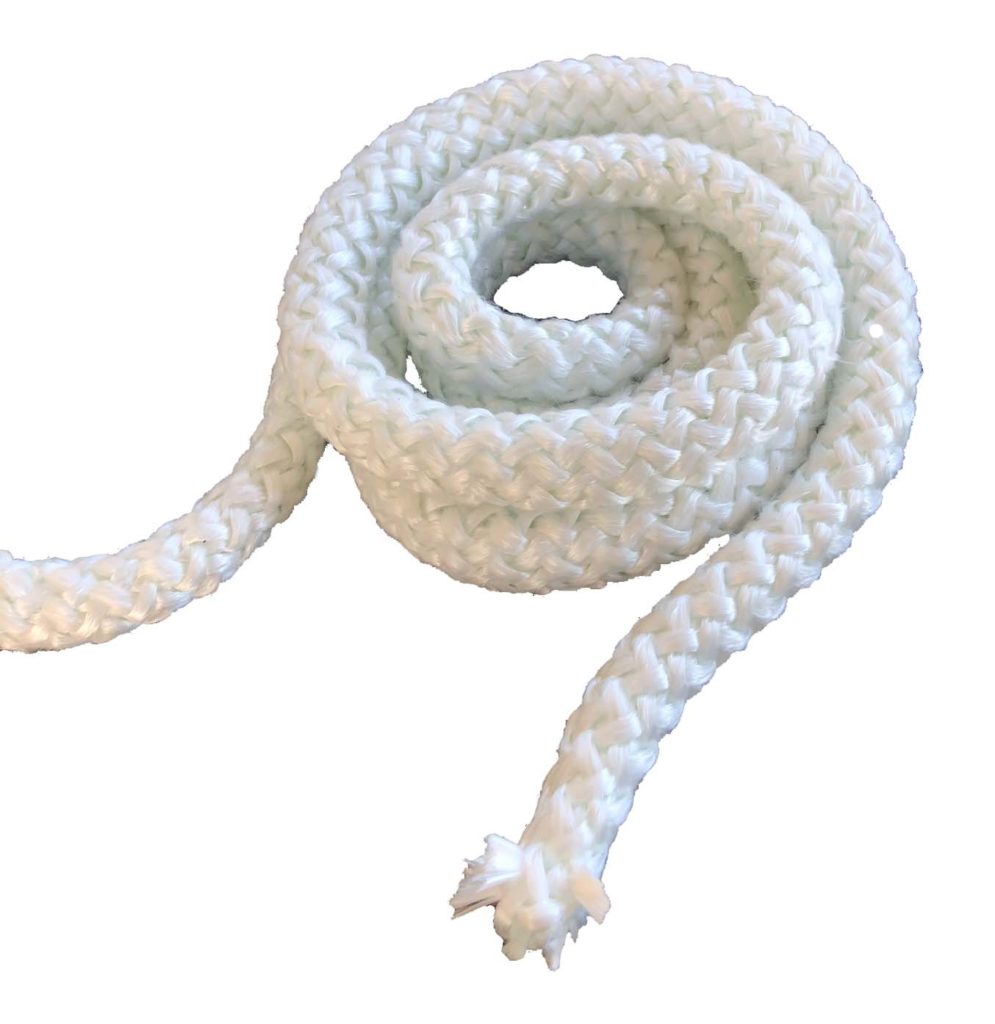Fiberglass Rope Properties And Applications

Fiberglass ropes are part of the broader category or fiberglass cloth or fiberglass fabric. Fiberglass ropes are woven, tightly spun silica yarn, which are used in many applications.
Fiberglass Rope Uses
For example, textured fiberglass ropes and fiberglass fabric more broadly have industrial uses, such as insulation in blankets, fire resistant curtains, insulation and wrapping for copper and other metal piping and conduits, exhaust flues, and turbine engines. This material is also used for heat and stress relieving for parts that are subjected to extreme temperatures. Fiberglass rope will not catch on fire and it can be continually subjected to temperatures in excess of 1000 degrees Fahrenheit. Importantly, fiberglass ropes are not made of or from asbestos.
Industries
Industries such as chemical processing, turbine and automobile manufacturing, gas and oil refineries, and the construction industry use textured fiberglass fabric, including fiberglass ropes.
Other Fiberglass Fabrics
There are other types and weaves of fiberglass ropes that their own particular properties and uses.
- Braided rope. Fiberglass braided ropes are yarns made from glass. The ropes are braided, which gives the rope more strength. Braided fiberglass ropes are used for insulation, often in extreme temperature environments. You will find braided fiberglass ropes insulating boiler room doors, flues and ducts.
- Fiberglass soft rope or rope lagging. Rope lagging refers to a process, typically used in hose wrapping, that has an extra layer of nylon. This protects the hose from excessive abrasion and scuffing from dragging and rubbing against and around rough and sharp edged objects. Fiberglass soft ropes are made from blown glass fiber. It is used for insulation and caulking purposes. You will find this material used on hoses, O-rings and gaskets in industrial, commercial and residential applications.
- Twisted fiberglass ropes. These ropes twisted giving them more elastic and flexible properties. These fiberglass ropes and used in masonry, plumbing applications, and for gap fill in expandable joints and recesses.
- Fiberglass webbing. Fiberglass webbing, or tape, are used in extreme temperature environments due to its thermal insulation properties and because fiberglass webbing retains its pliability. These glass fiber yarns are sterile, inorganic and will not catch fire. Fiberglass webbing is good for extreme temperature environments and it is oil and solvent resistant.
There is also non-textured fiberglass fabrics woven will twill or satin. This variety has more “weight” than its textured cousin and usually will have a smoother and glossier appearance. These fabrics have welding and heat insulating properties and uses.
